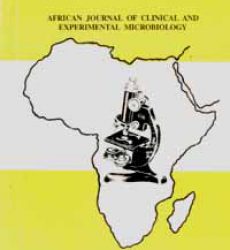Abstract
Studies were carried out to determine the prevalence of malaria parasite infection among infants and children (0-12yrs) in Ota, Southwestern Nigeria between April and December 2008. The two hospitals used were Ota General Hospital and Covenant University Health Centre, Canaanland, Ota. Thick and thin films were made and stained using standard parasitological procedures. Structured Questionnaires were distributed to ascertain the age, sex, drugs or insecticides used and state of health of the subjects before recruiting them into the study. Overall, 215 (80.5%) of the 267 children investigated were found to have malaria infection. Age group (0-5 years) had the highest frequency rate of 84.7% with mean parasite density of 900 and the difference between the age groups was statistically significant (p<0.05). Children of illiterates from suburb villages had the highest mean parasite density of 850 with 78.1% prevalence rate. 20% of the children were given local herbs and 22% used orthodox medicine as prophylaxis. Only 18% used insecticide treated mosquito nets while 24% of the parents spray insecticides to prevent mosquito bites. There is therefore need for more awareness on effective use of drugs and Insecticide Treated bed nets in malaria hyperendemic regions.
Key words: % Prevalence, malaria parasite, Plasmodium falciparum, infants, Children
Download full journal in PDF below

